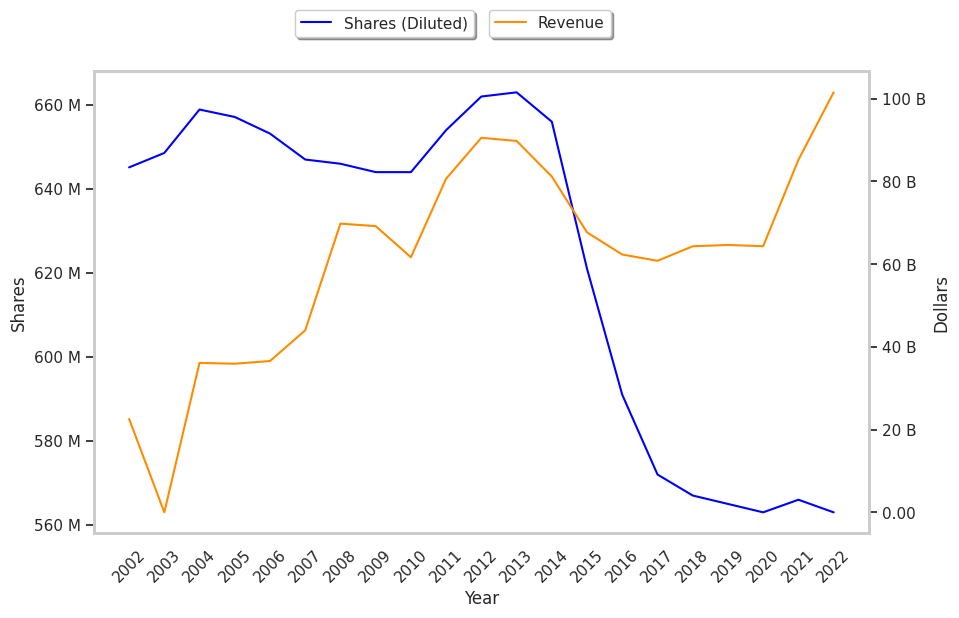Packaged Foods firm Archer-Daniels-Midland Company is one of the rare companies that fulfills most of Graham’s requirements for a defensive high-quality stock.
At Market Inference, we adhere to Benjamin Graham’s view that precise forecasting of a company’s prospects is highly uncertain. Investing with a wide margin of safety, determined on the basis of the company’s historical track record, offers far greater chances of positive investment results.
Archer-Daniels-Midland Company Trades at Fair Multiples
The “Graham number” is an equation that enables us to quickly determine how a stock is valued in terms of its earnings and assets:
√(22.5 * 6 year average earnings per share (4.01) * 6 year average book value per share (46.528) = $87.09
At today's price of $76.72 per share, Archer-Daniels-Midland Company is now trading -11.9% below price that Graham would recommend paying for the stock.
Some people use the Graham number alone, but it is best to consider it together with the other requirements for defensive stocks that Graham listed in Chapter 14 of The Intelligent Investor.
Impressive Revenues, Consistent Profitability, and a Growing Dividend Imply Value
Archer-Daniels-Midland Company’s average sales revenue over the last 6 years has been $123.67 Billion, so by Graham’s standards the stock has sufficient revenues to make it worthy of investment. When published in 1972, Graham’s threshold was $100 million in average sales, which would be the equivalent of around a half million dollars today.
Ben Graham believed that a margin of safety could be obtained by investing only in companies with consistently positive retained earnings. Retained earnings represent the cumulative net earnings or (deficit) left to equity holders after dividends have been paid out. Archer-Daniels-Midland Company had positive retained earnings from 2009 to 2022 with an average of $16.33 Billion over this period.
Ben Graham would also require a cumulative growth of Earnings Per Share of at least 30% over the last ten years.To determine Archer-Daniels-Midland Company's EPS growth over time, we will average out its EPS for 2008, 2009, and 2010, which were $0.90, $0.88, and $1.14 respectively. This gives us an average of $0.97 for the period of 2008 to 2010. Next, we compare this value with the average EPS reported in 2020, 2021, and 2022, which were $1.22, $4.79, and $7.71, for an average of $4.57. Now we see that Archer-Daniels-Midland Company's EPS growth was 371.13% during this period, which satisfies Ben Graham's requirement.
Too Much Debt and an Average Current Ratio
Graham sought companies with extremely low debt levels compared to their assets. For one, he expected their current ratio to be over 2 and their long term debt to net current asset ratio to be near, or ideally under, under 1. Archer-Daniels-Midland Company fails on both counts with a current ratio of 1.5 and a debt to net current asset ratio of 30.7.
Conclusion
Graham is best known for the Graham number valuation method, and his net-net strategy of investing in a broad portfolio of companies that trade below their net current asset value. But these approaches are too narrow, and fail to capture the full scope of Graham’s statistical approach to stock picking.
Archer-Daniels-Midland Company offers a rare combination of value, growth, and profitability. So it comes as no surprise that the company isn’t cheap enough to meet Graham’s definition of a net-net, and that it does not trade, on average, far below its Graham number. Rather, Archer-Daniels-Midland Company is an interesting company because it meets Graham’s broader definition of quality.
| 2017-12-31 | 2018-12-31 | 2019-12-31 | 2021-02-18 | 2022-02-17 | 2023-02-14 | |
|---|---|---|---|---|---|---|
| Revenue (MM) | $60,828 | $64,341 | $64,656 | $64,355 | $85,249 | $101,556 |
| Gross Margins | 6.0% | 6.0% | 6.0% | 7.0% | 7.0% | 7.0% |
| Operating Margins | 3% | 3% | 3% | 3% | 4% | 4% |
| Net Margins | 3.0% | 3.0% | 2.0% | 3.0% | 3.0% | 4.0% |
| Net Income (MM) | $1,595 | $1,810 | $1,379 | $1,772 | $2,709 | $4,340 |
| Net Interest Expense (MM) | -$224 | -$202 | -$402 | -$228 | -$169 | -$103 |
| Depreciation & Amort. (MM) | -$924 | -$941 | -$993 | -$976 | -$996 | -$1,028 |
| Earnings Per Share | $2.79 | $3.19 | $2.44 | $3.15 | $4.79 | $7.71 |
| EPS Growth | n/a | 14.34% | -23.51% | 29.1% | 52.06% | 60.96% |
| Diluted Shares (MM) | 572 | 567 | 565 | 563 | 566 | 563 |
| Free Cash Flow (MM) | -$5,112 | -$4,133 | -$4,917 | -$2,291 | $7,519 | $4,666 |
| Capital Expenditures (MM) | -$854 | -$651 | -$535 | -$95 | -$924 | -$1,188 |
| Net Current Assets (MM) | -$1,663 | -$1,200 | -$3,367 | -$2,337 | -$1,460 | $252 |
| Long Term Debt (MM) | $6,623 | $7,698 | $7,672 | $7,885 | $8,011 | $7,735 |
| Net Debt / EBITDA | 2.71 | 2.16 | 3.03 | 3.38 | 2.15 | 1.55 |



